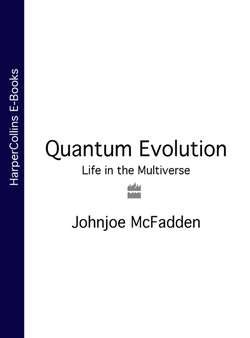Читать книгу Quantum Evolution: Life in the Multiverse - Johnjoe McFadden - Страница 17
SO WHAT ARE THE LIMITS?
ОглавлениеThe spacecraft’s exploration of life would thus have discovered its extraordinary versatility. Life on Earth, particularly microbial life, knows few limits. The minimal ingredients appear to be simply sources of carbon, nitrogen, oxygen and hydrogen plus a few minerals – elements abundant both on this planet and elsewhere. It doesn’t seem to matter too much how these are supplied; living organisms, particularly bacteria, are able to utilize sources as diverse as air, rock or vegetation. Active life also needs energy but organisms can capture either light energy or a multitude of chemical forms of energy.
Liquid water appears to be the chief limiting factor to life on Earth. Living organisms have a very limited ability to manipulate the freezing or boiling point of water: when the exterior temperature exceeds the limits of this ability, active life ceases. The most barren places on Earth are generally the driest. The relative sterility of the Antarctic Dry Valleys epitomizes the requirement for water but our own homes strikingly illustrate the same principle. Home maintenance is essentially a battle against moisture. We repair roofs and windows, paint surfaces with water-repelling chemicals and make endless trips to the DIY store in our battle to exclude moisture and promote desert conditions inside our houses. If we neglected this then microbes and moulds would quickly invade and undermine our homes.
Why water in its liquid state is so essential to life is a question we will return to in Chapter Five. On Earth, so long as liquid water is available, then life is also possible. Microbial life thrives in a diverse array of (watery) chemical environments from hot to cold, acid to alkaline and every other extreme of chemistry available on this planet. The source chemicals used to make up living cells are incorporated by a wide variety of chemical pathways and transformed inside living cells by a host of diverse metabolic pathways. There appears to be no common core of metabolic chemistry that drives all living cells. The diversity of the chemistry that underpins living cells in different creatures is surprising given the usual chemical explanation for the phenomenon of life: that it is a highly complex self-organizing chemical reaction (we shall be examining this in Chapter Six). If life is a merely a complex chemical reaction then we must explain how such a wide variety of chemical processes generates essentially the same phenomenon: life. This indicates to me that we need to look further than standard chemistry to discover the essential quality of life.
Another curious feature of life apparent from our brief exploration is its invasiveness. The inanimate world is characterized by a flowing down of energy: water flows down a hillside; electrons flow down to lower energy states and complex molecules break down to simpler ones. Yet living organisms will climb to fill any vacant niche. When in 1883, a volcano exploded on Krakatau, it obliterated two thirds of the island, leaving the remainder an inhospitable nutrient-depleted dustbowl. Yet some microbes (mostly cyanobacteria) can survive on a diet of volcanic ash and rapidly colonized the island. The growth of these microbes provided the nutrients to support further colonization, and a few decades later there was abundant plant-life and even a few small animals. Over the course of evolutionary time, life has relentlessly thrust itself in all possible directions to fill the planet’s every available niche. This aspect of life, its ability to direct itself forward, is hard to account for in terms of the perpetual running down that dominates inorganic chemistry. We are again pointed towards the realization that life represents a very different kind of chemistry from the reactions that drive the inanimate world.
